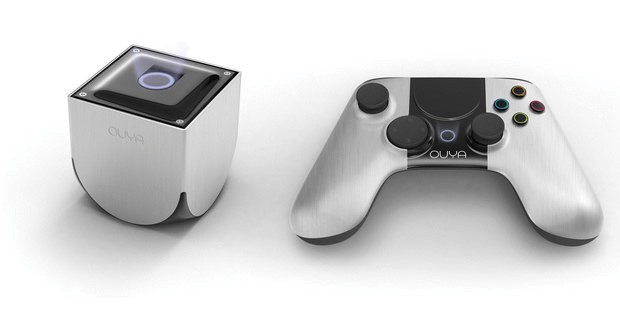Nintendo, Sony and Microsoft have enjoyed a solid decade of being the only three makers of good home video game consoles, but that might change with the emergence of these newcomers with plenty of potential.
Valve Corporation’s “Steam”
By now, any gamer worth their salt knows what Steam is. For the uninitiated, Steam is an online market where you can download a wide variety of video games. As of yesterday, it has 1870 titles available, created by AAA developers and indie studios alike.
But Steam isn’t a console, right? Technically, the closest thing to being a console is the computer (the oft forgotten red-headed, step-console of the video game industry). Well, while that might be true for now, Valve is stepping into the ring with “the big three.”
Its first functional effort is Steam’s new “Big Picture Mode,” released last year. With the simple click of a button and an HDMI cable connecting your computer and TV – boom, you have a quasi-home console. Everything is still running off your computer, but with the right controller setup, you’d never be able to tell. Plus, Big Picture Mode has a web client that works far better than any available on the big three’s consoles.
That’s not all Valve has been up to, though. Rumors of a “Steam Box” began to pop up early last year. Valve CEO Gabe Newell recently addressed those rumors, speaking openly with The Verge about the company’s plans for hardware.
The Steam Box will be a powerful computer specifically designed to run Steam’s Big Picture Mode, allowing for the same kind of gaming and web browsing, but probably at a better price and without the headache of building a gaming PC yourself.
The first Steam Boxes will also run on Linux, which is good news for some gamers. Newell said that running Windows OS on the box wouldn’t be difficult either.
More details are sure to emerge with time, but when the Steam Box does come out, it’s going to come out swinging.
Nvidia’s Shield
There’s already plenty of info on the handheld even though Nvidia just announced it Jan. 6,, but the jury is still out on whether it can stand shoulder to shoulder with the big three.
Regardless, it’s a powerful little piece of hardware with a Nvidia custom mobile processor, the Tegra 4. It’s got a 72-core GeForce GPU and a quad-core Cortex-A15 CPU, which basically translates to powerful as all hell for a mobile platform.
It’s sleek and looks like someone attached a screen to a modified Xbox controller. The button and joystick layout is a bit different, but hasn’t been drastically changed. The screen is 5 inches and has a 720p display. The Shield also has Wi-Fi connectivity and all games will be based around the Android OS.
But the Shield’s real draw is its Steam connectivity. Owners will be able to stream Steam games from their PC to the handheld, which means having a home console you can carry around with you.
There are downsides to the Shield, though, like an unknown price tag and lack of worthwhile games.
The Shield also appeals to a market that is already shored up by the Nintendo 3DS, and without exclusive titles, it might amount to nothing more than a novelty.
The Ouya
The video game darling of Kickstarter, the Ouya was the first sign that a console made outside the big three could be successful. The Ouya’s July Kickstarter campaign started reached its initial goal of $950,000 in 8 hours. By the end of its month-long fundraiser, it had topped $8.5 million. Oh, and the console is only going to cost $99.
One feature gamers are excited about is that the Ouya can be modified by anyone who knows how to. Of course, with open-ended, consequence-free modding comes the potential for video game piracy.
Despite the risk, the console has already signed on AAA developers to make exclusive games for it, and all games will be free to try. As the Ouya’s website says, “We don’t want you to buy a game unless you love it.”
And since it runs Android, the same games the Shield will run will be available on the Ouya at a fraction of the cost. When it’s released in April, we might see the birth of a new console giant.









